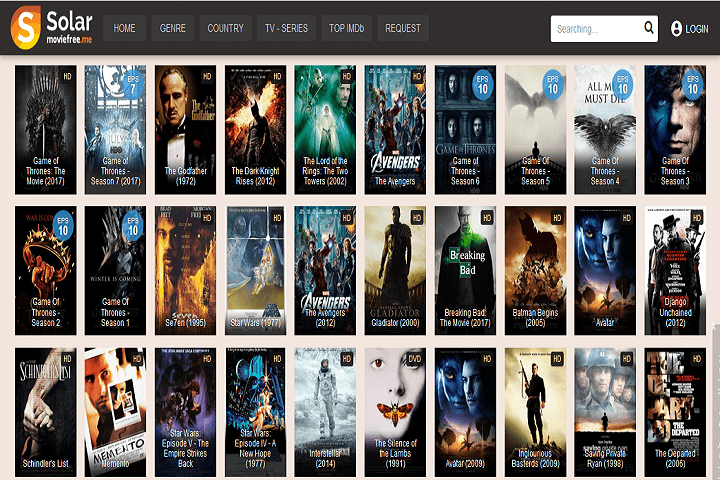Business
Increase Your Income Streams with These Three Remote Business Ideas
Nowadays, it’s not enough to rely on a single stream of income; you need multiple ones to have financial freedom. Here are three accounting business ideas you can look into.

You might think you already have it all—a great house, a well-paying job, and a lifestyle you can afford. There’s nothing more that you could want because you’re earning enough for your present needs, but the future is murky, and everything is uncertain. It could bode well for you to prepare for the unforeseeable.
A great way to tame your fear of the unknown is by ensuring that you can have financial freedom no matter what comes your way. For this, it might not be enough to rely on your full-time employment alone, especially considering that the prices of market commodities are only getting higher by the minute.
To have financial stability and freedom in the future, you can increase your income streams. This means that you’ll have other sources of income aside from your full-time job, which can be freelance jobs, part-time work, or even a side business that can still showcase your talents.
If you prefer to hold your own time and earn while practicing your technical skills, you can open a small business in line with your career path. To get you started, here are three small business ideas that any qualified accountant can establish:
1. Tax Preparation
As a professional accountant, you already have the upper hand over almost half of the world combined because you enjoy doing taxes. This can be a great side business for you, especially if you have a background in tax management because then, you could be of help to many entrepreneurs and individuals.
To make it even more convenient for you to conduct your business, you can look for the best online professional tax software so that you won’t have to be hassled in filing paperwork or seeking real-time updates. Most software solutions also come with a built-in automatic data backup feature, which means you won’t have to worry about losing all your hard work.
And because using the software can increase your turnaround time for tax preparation, you can accommodate more clients in the process. This means that you can maximize your earning potential without worrying about the other obstacles that often come with running your own business.

2. Financial Consulting
Unlike most people, you deal with numbers and money almost every single day, which means you probably have enough expertise in the field to give credible advice to others about money management. You can use your acquired knowledge and experience to start a financial consulting business.
It could be wise if you sought out more formal training in a specific niche, but with your wits and know-how alone, you can already advise individuals in need about how they can invest, save, or use their money better. However, gaining additional training might help boost your credibility as well.
Specializing in a niche market is unnecessary, but it can help create your reputation as a financial consultant. This is because if you were to focus on a specific field of interest first, then you can present yourself as an authority in that niche rather than a jack of all trades. But of course, this will still depend on what goals you want to achieve.
3. Notary Public
Lastly, if you’re looking to increase your income streams with a passive side business, you might do well with starting a notary public service. This is because you’re already a trusted and licensed financial expert in your field. If you were to receive formal training to get certified as an official notary, the business would soon follow.
Unlike the other two business ventures mentioned above, opening a notary public service can be more beneficial for you if you prefer a more passive approach to earning money. Once you have enough clients for your business, you can just set a fee for authorizing legal documents and other services.
The signature of a licensed notary is still a requirement on many legal and professional documents, which means this business can be very profitable if you put your mind to it. But of course, nobody needs their documents notarized every day, which means this may not be enough to provide for you as a standalone income source.
There are various other possibilities for expanding your skill sets and growing professionally without sacrificing your full-time job. By exploring your options for additional income sources, you will not only be finding ways to earn more for your future, but you’re also taking the time to hone your personal growth.
Business
Tax Filing Advice: Self-employment Tax (IRS Form 1040)
In this post, we’ll show you how to fill out Form 1040 and offer some tips on how to minimize your tax obligations. Tax Filing Advice – Self-employment Tax – IRS Form 1040.

Filing your taxes can be challenging, especially if you are a freelancer. As a freelancer, you are required to pay self-employment tax, maintain track of your revenues and expenses, and submit projected tax payments throughout the year. You can complete an IRS Form 1040 with a little help and a quarterly tax calculator, despite the fact that it could appear challenging. In this post, we’ll show you how to fill out Form 1040 and offer some tips on how to minimize your tax obligations.
Table of Contents
1. Assemble Your Papers
Before you start filling out your Form 1040, you must gather all the necessary information and paperwork. Your W-2s, 1099s for any freelance work you did, receipts for any anticipated tax deductions, and any other financial records you might have are included in this. You must also include your Social Security number and the Social Security numbers of any dependents you wish to claim.
2. Verify Your Filing’s Status
Your file status affects your tax rate and the size of your standard deduction. Determine which filing status is appropriate for you based on your marital status, the number of dependents you have, and other factors.
3. Ascertain your income
Your total income for the tax year is what is referred to as your gross income. This includes all forms of income, including wages, salaries, tips, and revenue from side jobs. Add up your income for the tax year and gather all of your supporting papers. List all of your sources of income from contract work.
4. Remove Your Modifications
By deducting adjustments from your gross income, you can reduce your taxable income. They also pay your health insurance premiums, student loan interest, and IRA contributions if you work for yourself.
5. Choose Your Tax Savings
By taking some expenses out of your taxable income, you can reduce it. The two distinct types of tax deductions are standard and itemized. The standard deduction is an agreed-upon sum of money that is available to all tax filers. As itemized deductions, you are allowed to deduct some costs like state and local taxes, charity giving, and mortgage interest. It is better to select the tax deduction that would result in the greatest financial savings.
6. In Step Six, determine your taxable income.
After subtracting either your standard deduction or your itemized deduction from your AGI, your taxable income will be determined. According to federal law, this amount is your taxable income.
7. Choose Your Tax Credits
They are made up of education, earned income, and child tax credits. To reduce your tax obligation, find out which tax credits you are eligible for.
8. Find Out How Much Tax You Owe
Your overall tax liabilities, less any payments or credits, are referred to as your tax burden.

9. Verify Your Upcoming Tax Payments
If you are self-employed, you must make estimated tax payments throughout the year. Check your expected tax payments throughout the year to ensure you made the required amount to avoid underpayment penalties.
10. Finishing Schedule C
Schedule C, the relevant form, is used to report your self-employment earnings and expenses. To calculate your self-employment tax, which is based on your net self-employment income, use Schedule C. In addition to this, you will also owe regular income tax.
11. Add Up Your Credits and Payments
Add all of your year-end payments, such as estimated tax payments and any taxes you have withheld from your pay. If you qualify, take a deduction for any tax credits. Here, your overall payments and credits will be displayed.
12. Figure out whether you owe a refund or are due one.
You should evaluate your entire tax burden in relation to your total payments and credits. If your tax due is greater than the sum of your payments and credits, you will be obliged to pay extra tax.
13. Upload Your Return
When you’ve finished filling out Form 1040 and any necessary attachments, sign and date your return, and then send it to the relevant IRS address. Make sure to keep a copy of your return and any supporting documents for your keeping.
14. Tips on How to Cut Your Taxes as Much as Possible
Now that you know how, let’s speak about how to complete Form 1040 so that you may maximize your tax savings as a freelancer.
Using tax deductions is a smart move.
As a freelancer, you might be eligible to write off a range of expenses from your taxes, such as business travel, office supplies, and office equipment. Keep note of all your expenses throughout the year in order to maximize any relevant deductions.
Submit projected tax payments
As was previously stated, self-employed individuals are obligated to make projected tax payments throughout the year. This allows you to keep track of your tax obligations and prevent underpayment fines.
You May Want To Add
The ability to deduct more business expenses and a lower tax rate on self-employment income are just two of the additional tax benefits that incorporating your freelancing business may offer. Speak with a tax professional if you’re unsure if incorporation is the right option for you.
Employ tax-favored retirement accounts.
You may be able to reduce your taxable income and increase your tax savings by contributing to tax-advantaged retirement plans like an IRA or Solo 401(k). Use these accounts if you meet the requirements.
Conclusion
Although filling out a Form 1040 can be intimidating, with a little planning and assistance, it is actually rather easy. Even though you may face certain challenges as a freelancer when attempting to maximize your tax savings, there are a number of strategies you may employ to help minimize your tax burden. By taking advantage of tax deductions, paying expected taxes, considering incorporation, and using tax-advantaged retirement plans, you may keep more of your hard-earned money in your pocket.
-

 Instagram2 years ago
Instagram2 years agoBuy IG likes and buy organic Instagram followers: where to buy them and how?
-

 Instagram2 years ago
Instagram2 years ago100% Genuine Instagram Followers & Likes with Guaranteed Tool
-

 Business4 years ago
Business4 years ago7 Must Have Digital Marketing Tools For Your Small Businesses
-

 Instagram3 years ago
Instagram3 years agoInstagram Followers And Likes – Online Social Media Platform

















